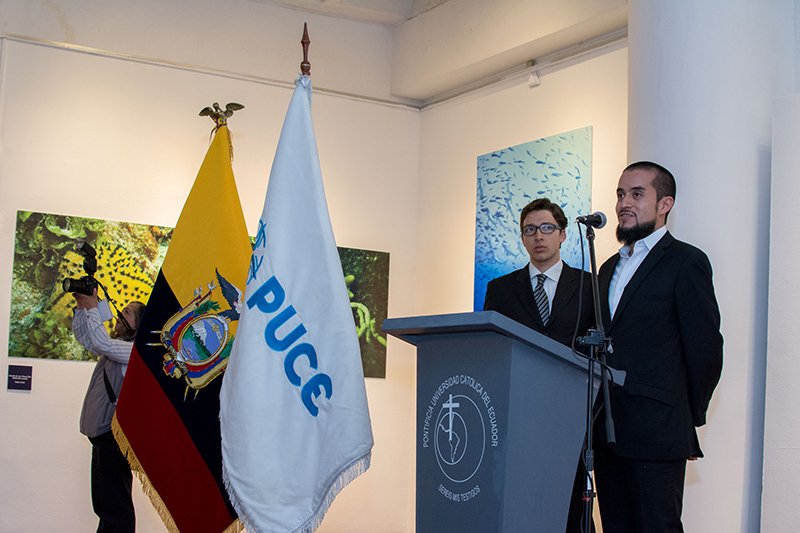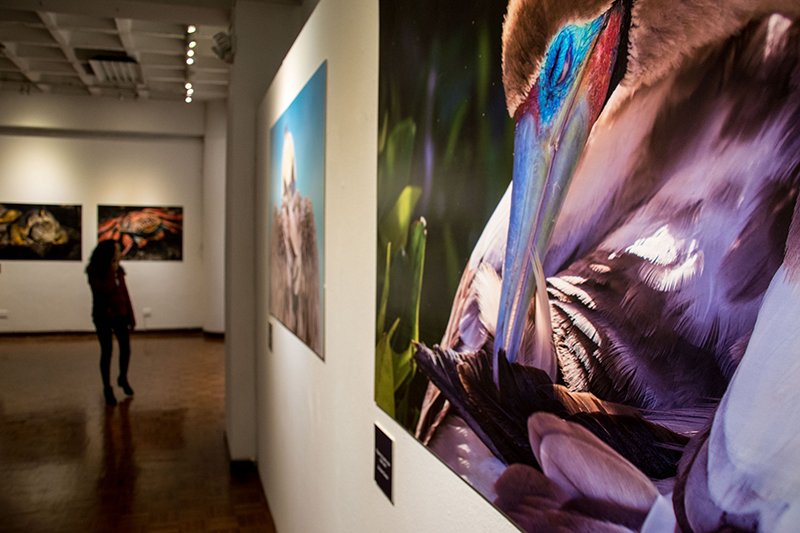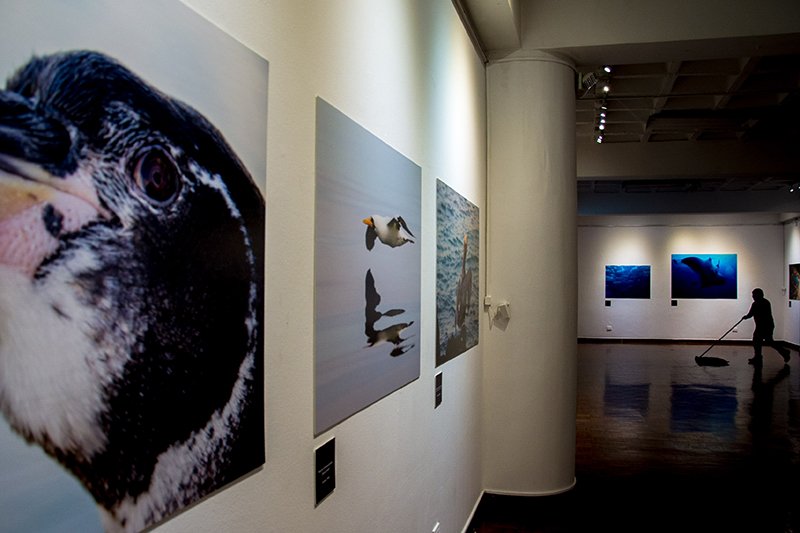
As part of the 60th anniversary of the Charles Darwin Research Station, on Friday August 2nd, we were invited to present a selection of photographs about the biodiversity of the Galapagos Islands at the exhibit “Galapagos: Laboratory of Biodiversity” organized by the Socio-Environmental Policy Observatory (OPSA) of the Economics Faculty of the Pontifical Catholic University of Ecuador (PUCE), the PUCE Cultural Center and the PUCE Student Federation, in Quito.
Professor Jorge Salgado of OPSA, who led this process, was the curator of the exhibit. Some of the attendees of the inauguration included the Choir of PUCE, Alfredo Carrasco, member of our Board of Directors, and members of our General Assembly. The exhibition also featured two murals painted by students Frank Cedillo and Damian Paredes. The sample was exhibited throughout the month of August.

Photographs of 15 scientists and photographers who have collaborated with the Charles Darwin Foundation over the years were exhibited: Alicia Choo, Andrés Cruz, David Acuña, Graham Edgar, Juan Carlos Moncayo, Juan Manuel García, Joshua Vela, Macarena Parra, Melanie Noboa, Nicolás Moity, Pelayo Salinas, Salome Buglass, Socrates Tomalá, Tomas Hannan and Volker Koch.
The objective of this photo exhibit was to inform and raise awareness among the community about the biodiversity of the marine and terrestrial ecosystems of the Galapagos, highlighting their complex interactions and their link with human life.

Within this exhibition, we also presented a selection of videos produced by the Charles Darwin Foundation (CDF), which I had the opportunity to direct. The institutional video for the anniversary of the CDF "60 Years of Science in Galapagos" and the release of the short film "Return to the Mangrove" that tells the story of a small mangrove finch that grew in captivity and now, back in its natural habitat, has been able to have its own offspring, thanks to the Protection and Recovery Project of this species managed by the CDF.

It was a great pleasure to have been invited to present these photographs and videos in continental Ecuador. We want to continue sharing our work, and thus communicate, with more and more Ecuadorians, the magic of the Galapagos Islands, which like the rest of the national territory and its biodiversity must be conserved.
Art, education and the dissemination of scientific information are very important tools to generate changes in society, and thus promote the establishment of effective policies for the management of vulnerable ecosystems and a sustainable society.





